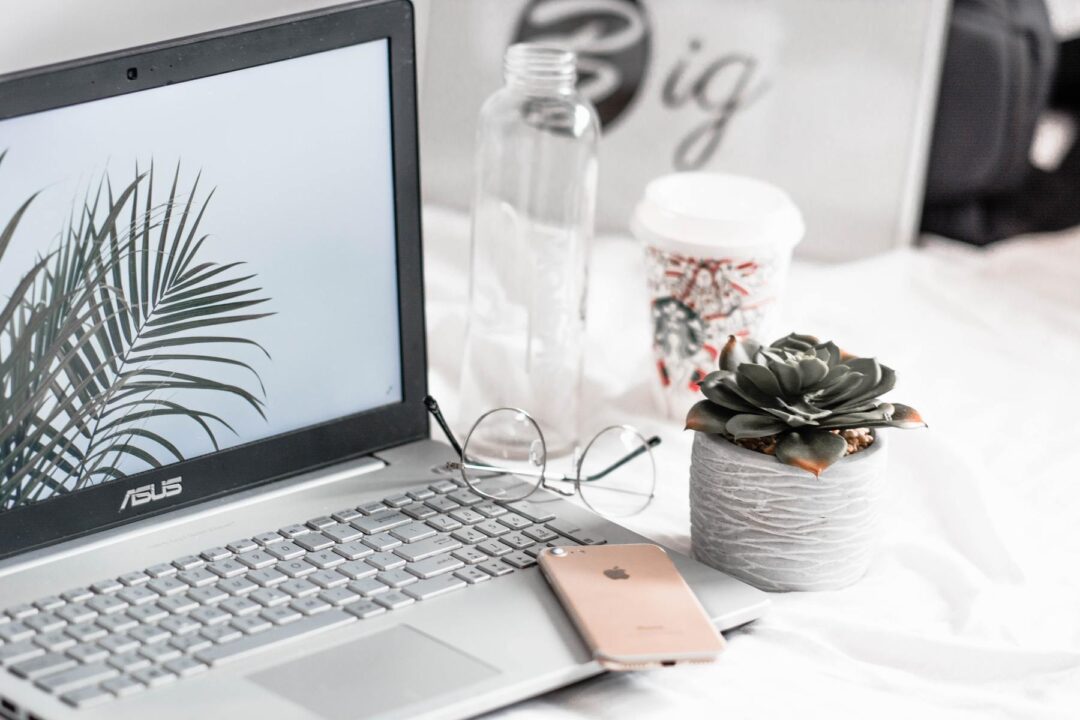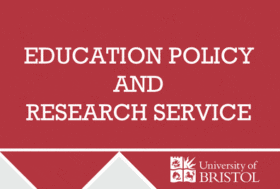Insights into inspirational arts practice in schools: Daring to be remarkable at Beaconsfield High School

- Art and Design |
- Curriculum |
- Drama |
- Music
Beaconsfield High School is a girls’ state grammar school that prides itself on excellence for education and beyond. We provide an exceptionally happy and high-achieving learning environment for our 1,100 students, and this year we are proud to be one of the top three grammar schools in the country for progress, with a P8 score of +1.21. We are a modern, diverse, inclusive and dynamic community valuing a broad and creative curriculum, supported by an inspiring extra-curricular programme. As a school, we don’t rest on our laurels and, in addition to receiving Outstanding at our last OfstedThe Office for Standards in Education, Children’s Services and Skills – a non-ministerial department responsible for inspecting and regulating services that care for children and young people, and services providing education and skills inspection in 2007, last summer we achieved the Exceptional Schools Award (a prestigious quality standard based on the attributes and practice of the best schools nationally), and have gained Governor Mark.
When I joined Beaconsfield High School five years ago, creative and performing arts were ‘underachieving’. There was little or no art on the walls, DT displays were dusty and dated, far fewer students were engaged in music, and drama was not taken seriously. I was determined that creativity would not be squeezed out in the push for academic success. Staff and Governors readily agreed to our core purpose of being a ‘happy, high-achieving learning community, discovering and developing individual potential’. My astonishingly creative deputy head worked with students and re-envisioned a previous support programme developing what is now our ‘Getting Life Ready’ (GLR) initiative – an initiative which primarily supports the ‘happy’ in our plans. The concept of academic and emotional happiness– incorporating resilience, curiosity, reflection and resourcefulness, and key life skills such as creativity and striving to be a committed learner – reflects our desire to provide real depth in life skills. Students can then use these skills to overcome academic anxiety and build opportunities to learn how to manage their mental health and wellbeing. It is not the silver bullet for life, but it helps! Four years later and the arts are now thriving, and the reason they are thriving is because we have the right staff teaching them.
Music
In three years, our head of music has increased the number of students taking part to over 150 each week. And it’s not just the students; staff are taking part in various activities and we have an incredible group of dedicated parents who regularly fundraise to ensure that music continues to grow and succeed in our school. Most of our 14+ music groups are staff-led (either academic staff or peripatetic), but some are student-led. The girls are VERY enthusiastic and as there are regular concerts, they remain committed to their ensembles. This ethos of commitment underpins the creativity in our school.
Our head of music and her team believe that the best musicians are ‘made’ from understanding and being able to experiment with making their own music. Hence, the curriculum is primarily practical, with academic information ‘dropped in’ regularly where relevant.
Performance raises aspirations and deepens the joy and appreciation of music. Students have many opportunities to perform and these range from community performances at residential homes and local churches, to more high-profile gigs at the RAF Club/House of Commons. European tours create awe and wonder and in her short time at Beaconsfield High, our head of music has organised a choral tour to Barcelona, a wind band tour of Belfast, and in 2021 they are heading to Venice or Salzburg for a choral tour.
Competitions provide excellent motivation, and we have won a number of local competitions, for example the Marlow Music Festival several times (choir and string classes). We were honoured when HRH The Duchess of Kent came to our 50th birthday celebrations (having opened the school 50 years before) and personally asked to listen to our choir as she had heard they were so good. She almost got up and danced!
Our aim for the future is to continue building on what we have already achieved. As a direct result of our head of music’s initiative, we now have 49 students studying GCSE music and 13 taking A level and our students have been offered places to study music at Oxford, The Royal College of Music and The Royal Northern College of Music.
Competitions provide excellent motivation, and we have won a number of local competitions, for example the Marlow Music Festival several times (choir and string classes). We were honoured when HRH The Duchess of Kent came to our 50th birthday celebrations (having opened the school 50 years before) and personally asked to listen to our choir as she had heard they were so good. She almost got up and danced!
Our aim for the future is to continue building on what we have already achieved. As a direct result of our head of music’s initiative, we now have 49 students studying GCSE music and 13 taking A level and our students have been offered places to study music at Oxford, The Royal College of Music and The Royal Northern College of Music.
Our head of music is passionate about what her department has to offer students:
I have a real love and passion for music, and I want the students here to have opportunities that I, as a former grammar student, didn’t have. I want to give older students opportunities to lead groups, so they learn fundamental life lessons and also give them the opportunity to inspire younger girls.
See here for an example of leading: https://www.youtube.com/watch?v=VzWqOnKBriU
Drama
Drama is also a vibrant and growing subject. We don’t have a dedicated drama studio and instead we use the main hall, which is equipped with lighting and sound, for productions and lessons. We lost a good head of department who could not work that way. However, we recruited our present and genuinely remarkable head or of drama two years ago, a talented and active thespian, playwright and all-round performer.
Our GLR programme has two central foci: collaboration and risk taking. Our head of drama brings this to life via ‘playfulness’. Students are encouraged to be playful in the development of their improvisation skills and text analysis. In Years 7 and 8, there is a strong focus on ‘throw-away’ improvisation where any idea has to be embraced positively. Whilst there is some focus on classic texts such as Puck’s speech from ‘A Midsummer Night’s Dream’, students’ shape-making a grumpy fridge door is likely to take precedence! Take a look at this to see what some students do: https://www.youtube.com/watch?v=hTqFUKBJYfU
Taking risks in a playful environment enables students to see the drama studio as a safe place to experiment and develop. Workshopping ideas and being open to deconstruction and reconstruction of these ideas is essential. Praise for commitment and having the energy to test an idea is valued more than the idea itself, and a key phrase often heard is ‘don’t trash till you try!’ Praising energy and commitment above content means that decisions made about content can be rigorously scrutinised and challenged. Students feel comfortable offering critical feedback and exposing their work to others, because they understand that critical responses are about considering the bigger picture of exploring how we communicate with an audience. An example of this can be seen here: https://www.youtube.com/watch?v=vQKNTcVgqsw
As with music, drama offers a range of real-life performance opportunities beyond the classroom:
- Year 7 took part in the Junk Band Clowning for the Beaconsfield Festival of Lights and a Commedia Dell’Arte performance for the Wycombe Arts Festival. Students were interacting with the general public and learning how to think on their feet as busking performers.
- Year 8 took part in the Mock Trial Competition at a local magistrates court in High Wycombe.
- Year 9 took part in the Shakespeare Schools Festival, performing ‘Romeo and Juliet’ at The Kenton Theatre.
- Year 12 took a production of ‘The House of Bernarda Alba’ to The Desborough Theatre, Maidenhead. Year 12 also completely led their own production of ‘Pancake Day’, and others were invited to take part in an Open Mic/Theatre Night at The Cockpit Theatre in London, performing a devised piece entitled ‘Cut’, alongside industry professionals.
Our head of drama personally oversees and contributes to our annual school productions. They are open to all students in Years 7-10. He creates an ensemble musical theatre production wherein the students are able to take a lead in choreography, some scene writing and arranging the music. It is presented in an intimate thrust/environmental setting in order to encourage some performer/audience interaction. Some ad-libbing is encouraged so that students understand the value of living in the moment and develop their problem-solving skills. This model of different year groups coming together to create an organic production – as opposed to a perfect, polished production – means that students value everybody’s input and a sense of a community is created beyond the artefact of a piece of theatre.
Each year group has a minimum of one theatre trip per year. Years 10-11 have two and Years 12-13 have six. By GCSE, drama students have over five productions to draw on when evaluating influence of other practitioners in personally devised work. Many of the trips are followed by a post-show discussion with the director/performers.
Our head of drama explains why drama is such an important part of school life:
We all need to communicate our feelings, our ideas, our sense of fun, our questions about the world, our desires to be understood. Our students recognise the value of the arts in ‘feeding their soul’ and expressing themselves. They want to be led by inspiring leaders, but they also want to lead themselves because they instinctively know how important it is to be part of something, to engage and have a go. As an art form, theatre has a transient quality which is incredibly healthy. The workshop approach allows students to keep moving, keep chipping away at progress, to always know that there is a further opportunity to experiment, consolidate, re-invent. The arts are a powerful space for helping us discover who we are (and where we are) in the world and for helping us understand that we can shape our own image.
Art
Five years ago, the number of students taking art GCSE and A level was declining; we knew we needed a new pedagogy and renewed investment to turn this around. When we recruited our current, highly imaginative head of faculty, art and DT were separate entities delivering tried and tested projects, but they lacked creative vibrancy. She created a unified Creative Arts Faculty, delivering art and design as the overriding subject along with specialisms in graphics communication and art and craft and design. Staff members support each other’s teaching by sharing best practice, developing resources together, observing each other’s lessons, and even team teaching. By using the same exam board across the faculty, staff are supported in assessment and materials to mark and moderate work more accurately.
Our specialist leader of education was recruited to help overhaul the outdated practice. This provided a fabulous opportunity for students to present mixed media design outcomes, fully embedded in quality first-hand photographic sources, outstanding observational drawing skills, creative experimental sampling with the added bonus of 3D work. This has become our recipe for ‘top box’ marks. Students are introduced to a wide range of skills including; mono printing, felt making, silk painting, fabric dyeing, free machine embroidery, working into gloss photographs, wire work, mod-rock, air dry clay sculpture, to name but a few.
Our specialist leader of education’s skills, inspirational ideas and new staffing, rejuvenated the team. Under our head of creative arts’ leadership, a stunning new five-year curriculum is emerging; students present their work in sketchbooks or A2 presentation boards in the same way they will for their GCSE and A ‘Level coursework.
Please have a look at some of what I am trying to describe here: https://www.youtube.com/watch?v=VzWqOnKBriU
Art and graphics workshops are open on a rota system (lunch/after school) for quiet, dedicated, independent working. Students learn first-hand through enrichment trips to art galleries and museums. We encourage students to visit unusual places, for example the Natural History Museum to see how butterflies are presented, behind the scenes at a butcher’s shop, a building site or the shoreline of a beach, and to use photography to support design themes.
Students thrive on positive energy and one of the key ideas behind inspiring our students is to ‘hook’ into an individual. In class, the teacher, art technician and student often have mini-tutorials to discuss work in progress, further experimentation, additional artists etc. More often than not, one of those lovely ‘ta-dah’ moments will happen when we know a student is ‘hooked’ into the next exciting phase of the design process. Teachers share personal creative industry experience to demonstrate how design ideas (however bonkers) come together. When asked, students will readily list a stream of examples which demonstrate how they are effortlessly applying GLR to their learning.
New wall displays of artwork promote inspiration, and within hours of new coursework being mounted on the art room walls (today), they were already being used as teaching tools for younger students to exemplify possible starting points for research and experimentation. Students are naturally inquisitive of techniques and want to try new materials for themselves.
It is our intention that our art and design students will develop seamlessly into highly confident and technically skilled artists and designers. The importance of having an excellent work ethic with a ‘no excuses’ attitude when meeting regular deadlines, is impressed upon every student. We already have one student, who we think will inspire the next generation of British designers, with an unconditional offer from St Martin’s College.
Our head of creative arts explains why her department has seen a rise in popularity:
It is my belief that creativity is developed through working in the style of artists and by experimenting to produce unique personal outcomes that might not have otherwise been previously visualised. The renewed energy of our students who have been ‘given permission’ to give everything a go and to succeed through trial and error is very exciting!
I am so proud of our creativity and what it brings to our students and staff. I think it is part of what we expect; #dare to be remarkable! The school looks great (as does my office), and the buzz around the school is surely supported by the flair of joy from creative expression. Oh, and the exam results are great too!
Rachel Smith is Headteacher at Beaconsfield High School
This article was published in September 2019 and reflects the terminology and understanding of research and evidence in use at the time. Some terms and conclusions may no longer align with current standards. We encourage readers to approach the content with an understanding of this context.










